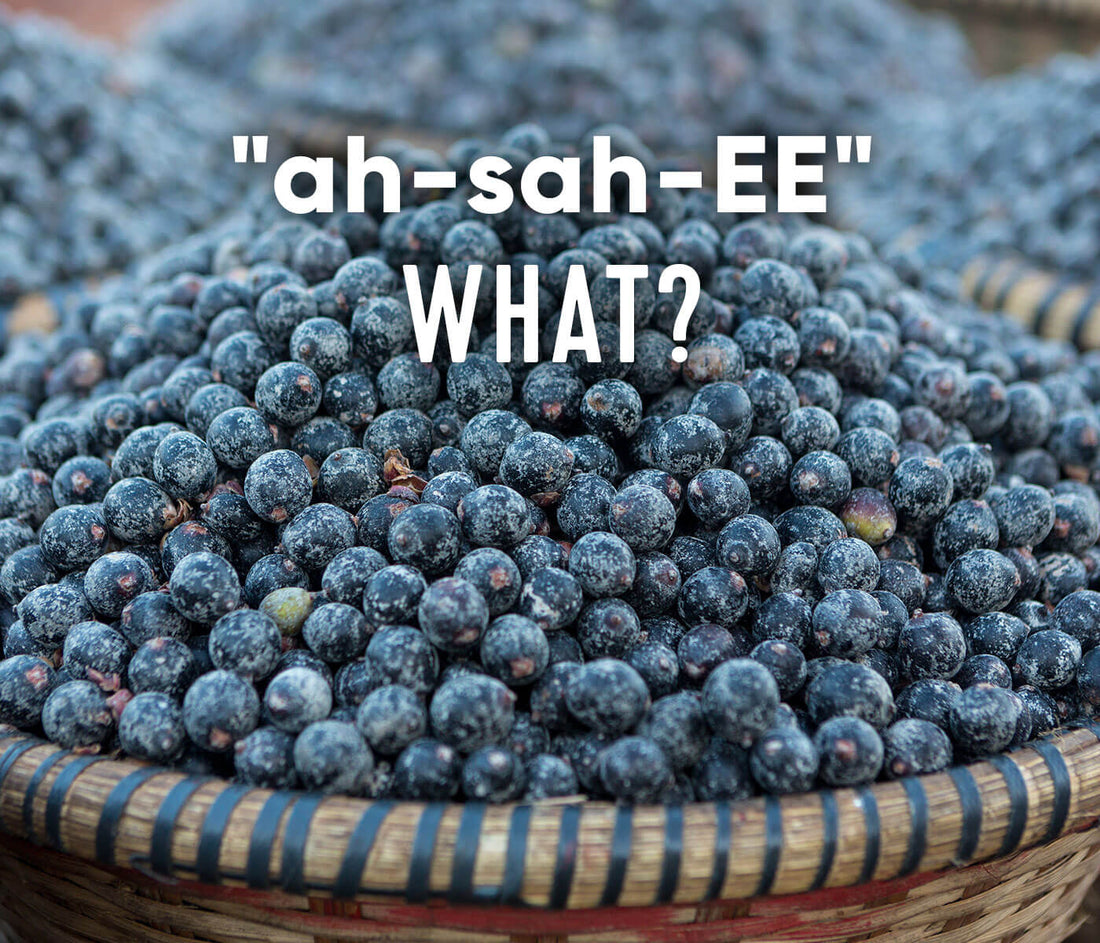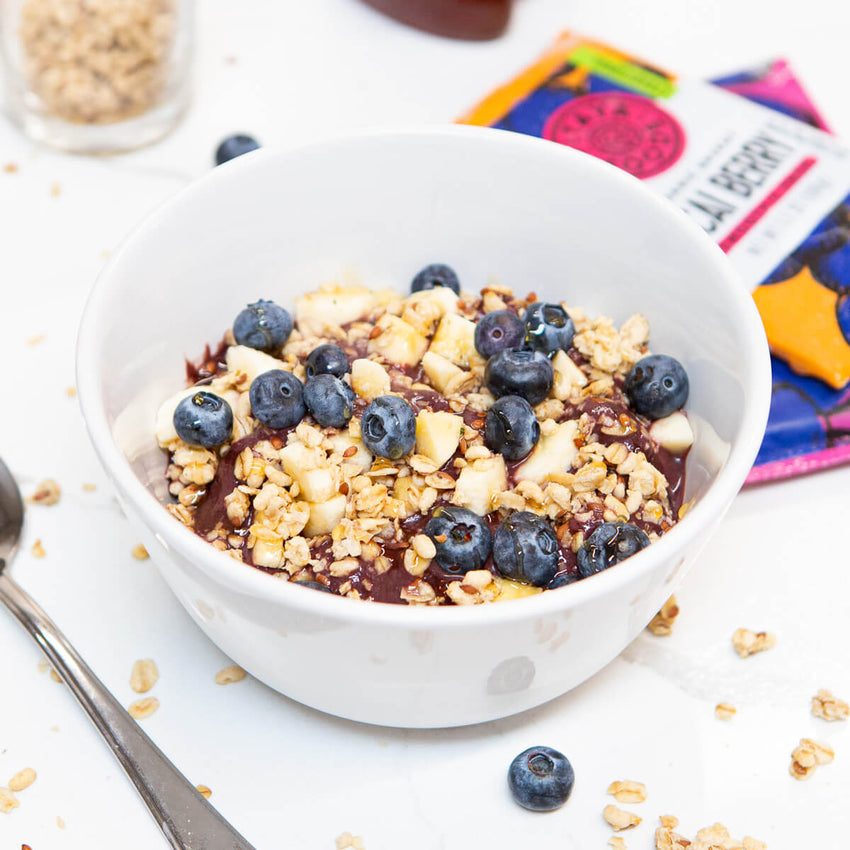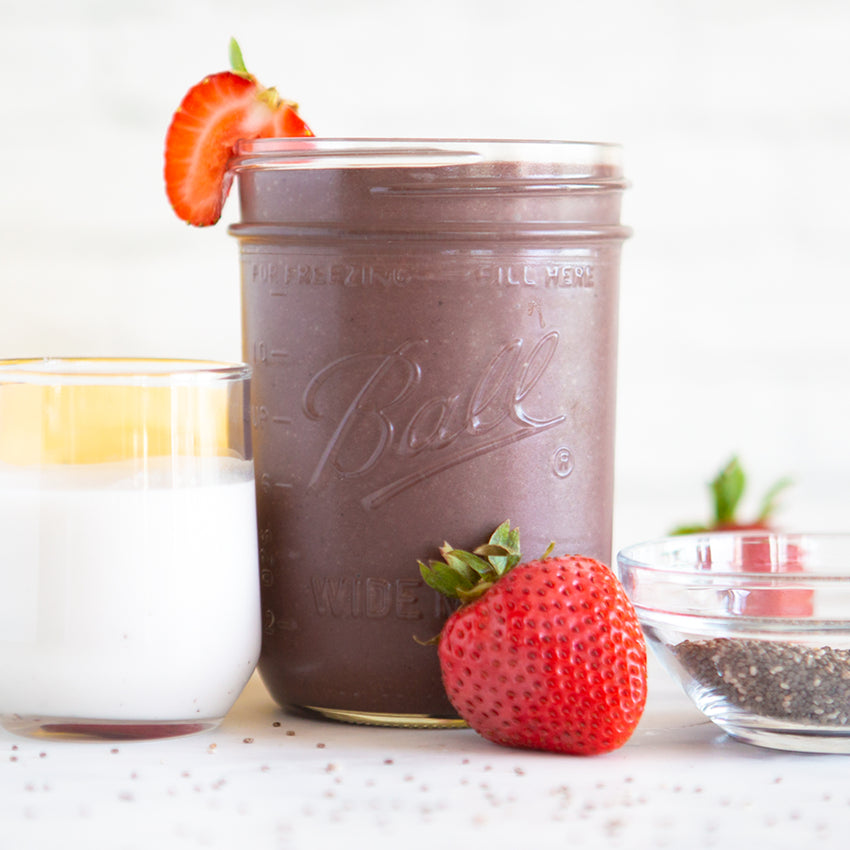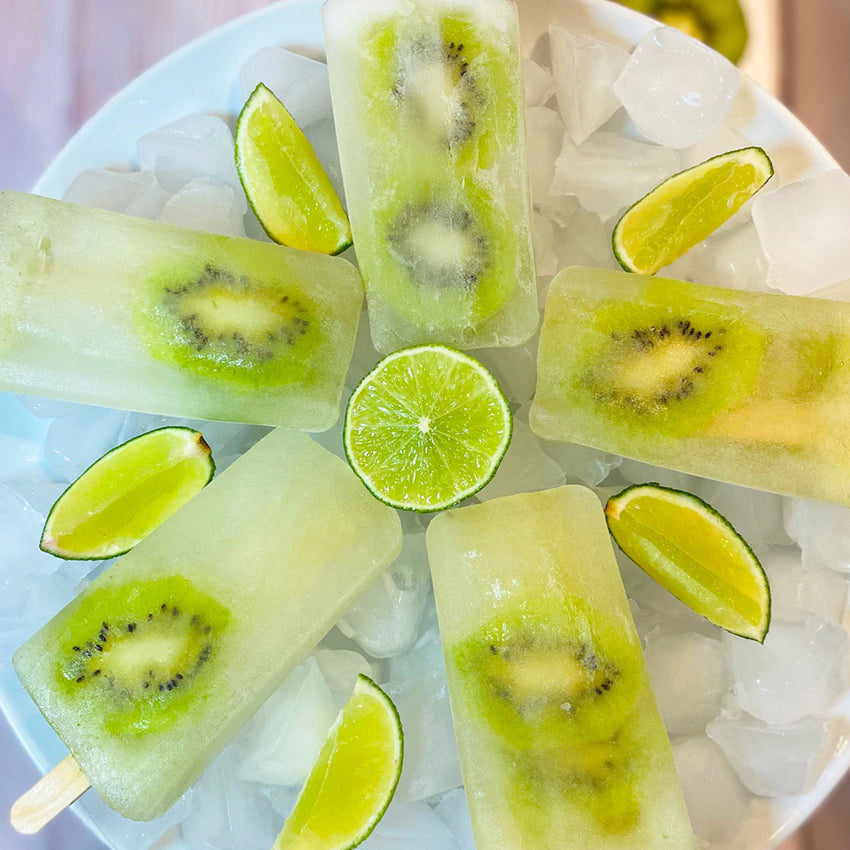Acai Berries: Purple Gold From The Amazon Rainforest
Acai berries have emerged as a superfood in recent years because of their rich nutritional profile and potential health benefits.
From improving cardiovascular health to boosting brain function and cognition, these berries are touted as a true game-changer, which has made them popular among health-conscious people.
So, are acai berries that good for our health? Stick around because we've broken it down below. We'll discuss acai berries' nutritional profile, potential health benefits, taste, how you can add them to your diet, and more.
What is Acai?
Acai is a palm tree that primarily grows in tropical Central and South America. It's well known for the berry fruits it produces. These are deep purple and the same size as grapes (about 0.4-0.8" in diameter).
Similar to many berries, those coming from the Acai palm tree have a rich nutritional profile, with 100 grams providing:
- 60 calories
- 6 grams of carbs (3 grams of which are fiber)
- 2 grams of protein
- Vitamins A and C, potassium and calcium
Unlike other berries, these are also rich in healthy fats, with the same serving providing 5 grams. This means they are more energy-dense and satiating than other berries that primarily offer carbs.
Another distinction is that acai berries have a pit (similar to other fruits, such as peaches) that can make up more than three-quarters of the fruit's total weight.
Acai berries are often referred to as "purple gold" because of their rich nutritional profile and the fact that they serve an essential economic role in the regions where they grow, particularly in the Amazon rainforest.
The only downside of Acai berries is their short shelf life. They typically go bad within days of harvesting, which makes it nearly impossible to transport them fresh. So, these are typically sold frozen and can be just as delicious to snack on, add to smoothies, and use in recipes.
How do you say Acai?
No matter where you go, someone is going to pronounce Acai differently. "ah-sah-EE "... "ah sah EE." You almost got it! Click the play button to hear the sound and try again.
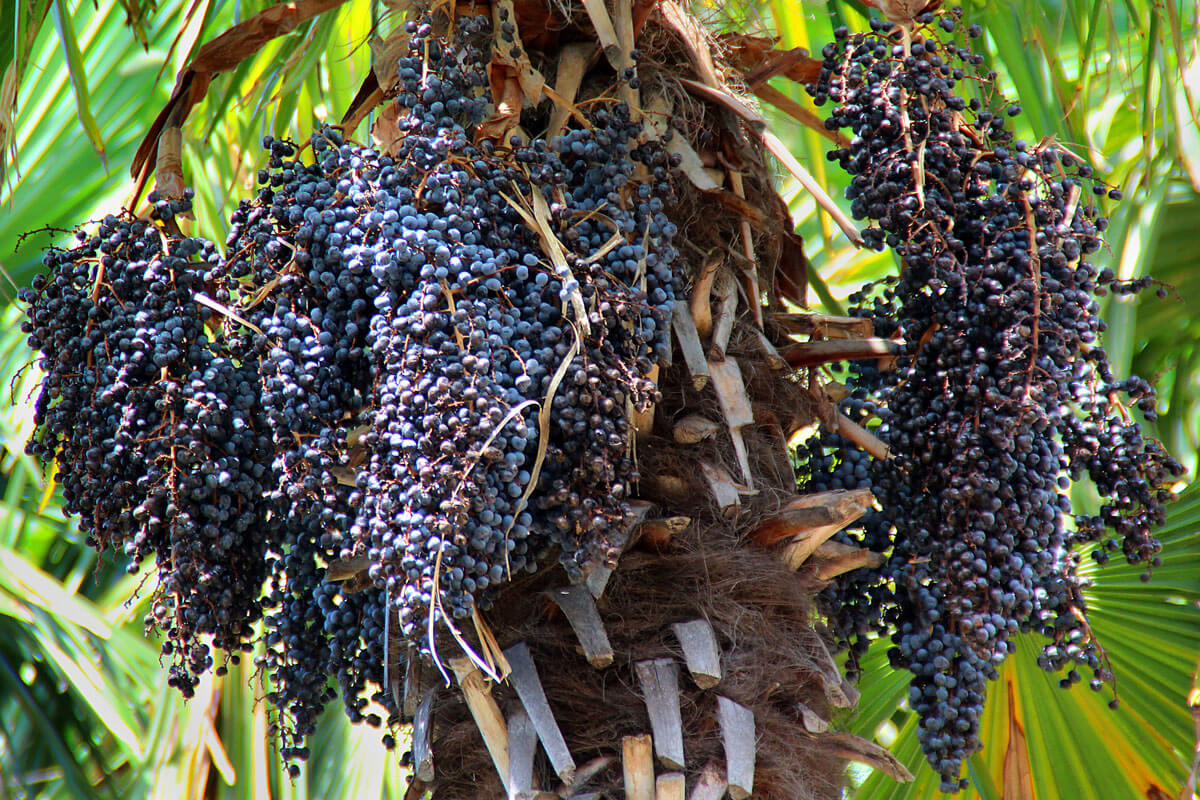
Health Benefits of Acai
1. Rich in Antioxidants
Acai berries are an excellent source of plant compounds called anthocyanins. These are responsible for the fruit's deep purple color and provide high levels of antioxidant benefits for us.
The primary function of antioxidants is to scavenge for free radicals (also called reactive oxygen species or ROS), which can otherwise accumulate, damage healthy cells in the body, speed up aging, and increase the risk of certain diseases, including cancer and diabetes.
By loading up on antioxidants, we reduce the risk of these effects.
2. Potential Brain-Boosting Effects
Nerve cells (neurons) that make up the brain are particularly susceptible to oxidative stress, which results from elevated levels of oxygen species.
Over time, these can lead to oxidative stress and promote inflammation, which is linked to impaired cognition and a higher risk of neurodegenerative disease (e.g., Alzheimer's).
Thanks to their strong antioxidant properties, acai berries are suggested to support brain health, with early studies showing promising results.
3. Could Improve Cholesterol Levels
LDL cholesterol, often called 'bad' cholesterol, is the one we want to keep under control because it can build up in the arteries and increase the risk of cardiovascular disease down the road.
The good news is that certain foods are shown to help reduce LDL cholesterol levels, and one of them is acai berries.
While we certainly need more research in this area, the studies we have are promising.
What Does Acai Taste Like?
If you ever end up eating Acai berries, they have a unique, earthy, and somewhat bitter taste with hints of blackberry.
Some people even suggest hints of dark chocolate, making for an interesting eating experience, especially if you've never had them before.
In response to varying consumer preferences, the market offers both sweetened and unsweetened açaí products.
Sweetened açaí is typically mixed with added sugars or other sweet fruits to enhance its palatability, catering to those who prefer a sweeter taste or are using açaí in dessert-like preparations.
Unsweetened açaí, on the other hand, preserves the berry's original flavor, appealing to purists and health-conscious consumers who wish to avoid added sugars.
This diversification in product offerings allows acai to be versatile in its use, ranging from smoothie bowls, juices, acai powders to health supplements, ensuring it meets the taste preferences of a wide audience.
What is an Acai Bowl?
An acai bowl, or Açaí na Tigela, is a Brazilian dessert typically served as a smoothie in a bowl or glass. Depending on the blended ingredients, the dessert has a dark purple or chocolate hue color.
The main ingredient is acai berry pulp, which is often blended into a creamy texture with frozen banana and guarana syrup (made from guarana fruit) as a thick base blend. Then it is topped with different ingredients. Some common toppings include granola, banana slices, strawberries, blueberries, and mango.
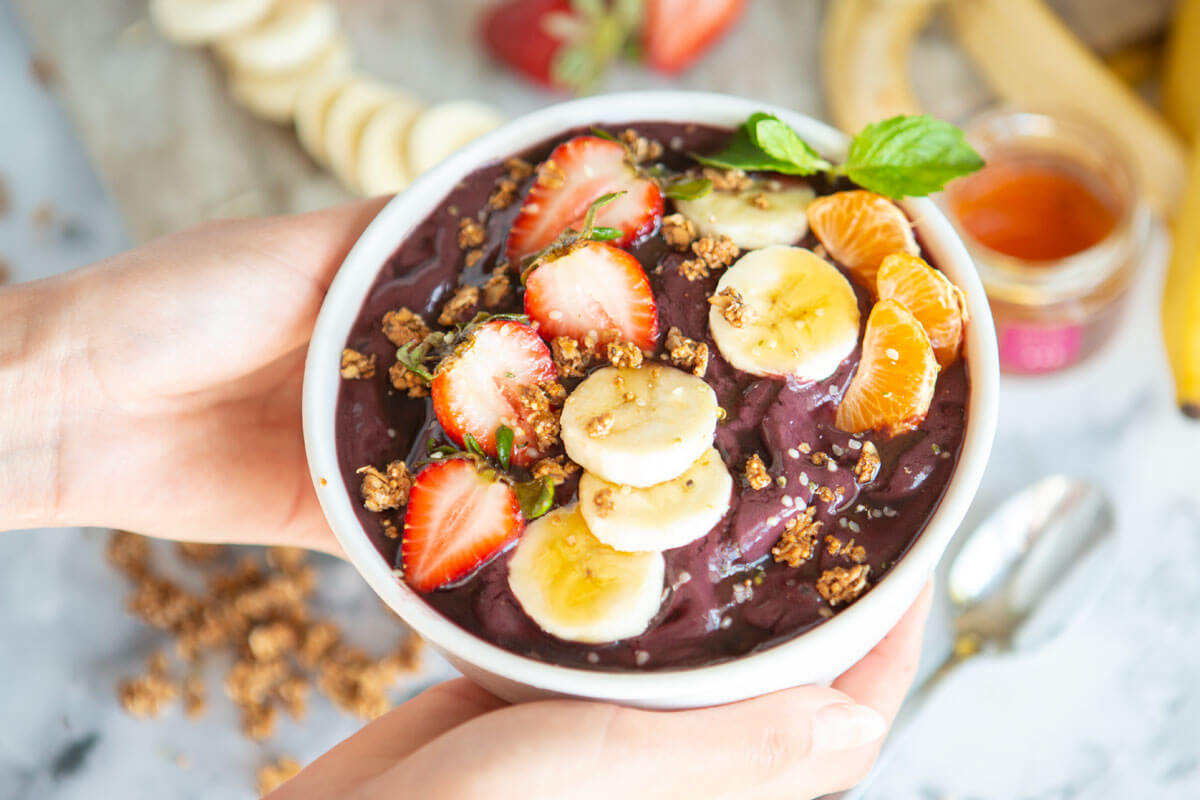
Summary
Açaí berries, often hailed as "purple gold," are treasured for their exceptional nutritional benefits and their significant contribution to the economy of the Amazon Rainforest. These small, dark purple fruits are packed with antioxidants, standing out in the health community for their ability to combat oxidative stress and support overall well-being. Beyond their antioxidant capacity, açaí berries are notably rich in dietary fats, a characteristic that sets them apart from more common berries. This unique nutrient dense composition makes them a coveted ingredient in health-conscious diets around the globe.
Interested in adding our frozen fruit Acai Berries to your diet? Check out our Organic Acai Berry Smoothie Packs and Acai Bowl recipes. Enjoy!
